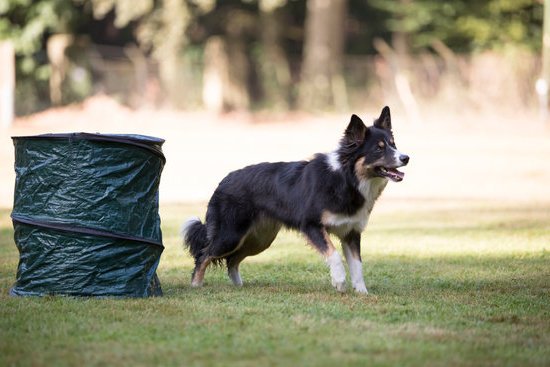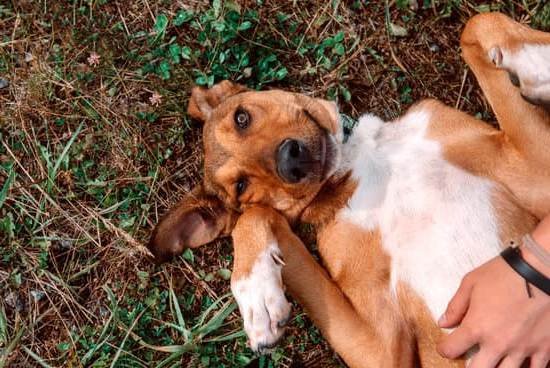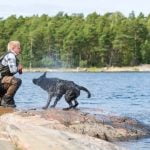Is it possible to train away dog aggression? Dog aggression is a concerning behavior that can manifest in various forms, including fear, territorial, possessive, and social aggression. Addressing this issue is crucial for the well-being of both the dog and its human companions. Understanding the root causes of aggression, the role of training in addressing it, and the use of positive reinforcement and behavioral modification are essential components in managing and reducing dog aggression.
Dog aggression can stem from a combination of genetics, environmental influences, lack of socialization, and previous trauma or abuse. It is important to recognize these underlying factors in order to effectively address aggressive behavior in dogs. The role of professional trainers or behaviorists becomes crucial in providing guidance and support in tackling dog aggression.
Utilizing positive reinforcement techniques and creating a safe and structured training environment are key strategies in addressing aggressive behavior. Coupled with desensitization and counterconditioning exercises, these methods can help modify a dog’s aggressive tendencies. Additionally, socialization and play therapy play significant roles in reducing aggression by building confidence and trust in dogs.
Ultimately, consistency and patience are vital when working with an aggressive dog. It is important for dog owners to understand that addressing aggression is a long-term process that requires commitment. Seeking professional help and staying dedicated to the training process can lead to positive outcomes for aggressive dogs.
Types of Dog Aggression
Dog aggression can manifest in several different forms, each with its own unique triggers and behaviors. One type of aggression is fear aggression, where a dog may react aggressively when put in a situation that it perceives as threatening or frightening. Territorial aggression occurs when a dog feels the need to protect its territory or space, often leading to aggressive behavior towards unfamiliar people or animals.
Possessive aggression is exhibited when a dog becomes protective over its resources such as food, toys, or even its owner. Social aggression happens when a dog does not know how to interact appropriately with other dogs or humans and can lead to aggressive behaviors during social interactions.
It is important for dog owners to recognize and understand the specific type of aggression their dog displays. Identifying the root cause of the aggression is crucial in addressing and managing the behavior effectively. Is it possible to train away dog aggression? Understanding the different types of dog aggression can help provide insight into how best to approach training and behavior modification techniques based on the specific triggers and underlying causes.
By understanding the different forms of dog aggression, owners can work towards addressing these behaviors through targeted training interventions and positive reinforcement techniques. Additionally, recognizing that certain types of aggression may stem from genetic predispositions, environmental influences, lack of socialization, or previous trauma allows for a more personalized approach to training. Working with professional trainers or behaviorists who specialize in aggressive behaviors can also be beneficial in creating a tailored training plan for the individual needs of the dog.
Understanding the Root Causes of Aggression
Dog aggression can be a result of various factors, including genetics and breed tendencies, environmental influences, lack of socialization, and previous trauma or abuse. It is essential to understand the root causes of aggression in order to effectively address and manage it.
Genetics and Breed Tendencies
Certain breeds are known for their predisposition towards aggressive behavior. Guardian breeds, for example, may exhibit territorial or possessive aggression due to their natural instincts to protect their home and family. Understanding breed tendencies can help dog owners recognize potential triggers for aggression and develop appropriate training strategies.
Environmental Influences
The environment in which a dog is raised plays a significant role in shaping its behavior. Factors such as living conditions, social interactions, and exposure to stimuli can impact a dog’s temperament and likelihood of exhibiting aggressive tendencies. It is important for dog owners to create a safe and positive environment that promotes good behavior and reduces stress or anxiety.
Lack of Socialization
Dogs that have not been properly socialized from a young age may struggle with fear aggression or exhibit anxious behavior in unfamiliar situations. Socialization plays a crucial role in building a dog’s confidence and teaching them how to interact with other dogs, animals, and people. Without proper socialization, dogs may become reactive or defensive in new environments.
Previous Trauma or Abuse
Dogs that have experienced trauma or neglect in the past may display aggressive behavior as a coping mechanism or as a result of fear-based responses. It is important for dog owners to be patient and understanding when working with rescue dogs or those with unknown histories. Building trust through positive reinforcement and providing a secure environment can help alleviate the effects of previous trauma.
It is possible to train away dog aggression by addressing the root causes through targeted training techniques and creating an environment that supports positive behavior. Understanding the contributing factors behind aggression is the first step toward creating an effective training plan that addresses each individual dog’s needs.
The Role of Training in Addressing Aggression
Aggression is a common issue that many dog owners face, but the good news is that it is possible to train away dog aggression. Training plays a crucial role in addressing aggressive behavior in dogs, and it can be effective in managing and reducing their aggressive tendencies. Whether the aggression is rooted in fear, territorial behavior, possessiveness, or social issues, training can help address these issues and improve the overall behavior of the dog.
One of the key aspects of training to address aggression is early intervention. Addressing aggressive behavior as soon as it becomes apparent is important in preventing it from escalating further. Working with a professional trainer or behaviorist who specializes in aggression can provide valuable guidance and support in developing a tailored training plan for your dog.
Positive reinforcement techniques are also essential in addressing aggressive behavior. By rewarding desired behaviors and creating a safe and structured training environment, dogs can learn to associate positive experiences with certain situations, reducing the likelihood of exhibiting aggressive behavior. Additionally, implementing desensitization and counterconditioning exercises can help change the way a dog responds to specific triggers that may lead to aggression.
It’s important for dog owners to understand that addressing aggression is a long-term process that requires consistency and patience. While progress may not happen overnight, with dedicated training and management strategies, there is hope for improving an aggressive dog’s behavior and fostering a positive outcome.
| Training Techniques | Effectiveness |
|---|---|
| Positive Reinforcement | Effective in addressing aggressive behavior by creating positive associations |
| Desensitization and Counterconditioning | Helps change the way a dog responds to specific triggers |
Positive Reinforcement and Behavioral Modification
When it comes to addressing dog aggression, utilizing positive reinforcement techniques and behavioral modification is crucial. This approach focuses on rewarding desired behaviors and gradually modifying the aggressive tendencies in dogs. Here are some key strategies for implementing positive reinforcement and behavioral modification:
- Utilizing treats, toys, and praise to reward calm and non-aggressive behavior
- Implementing a consistent training schedule to reinforce positive behaviors
- Using clicker training to mark desirable behaviors and associate them with rewards
Creating a safe and structured training environment is also essential in the process of behavioral modification. Dogs with aggression issues benefit from a controlled setting where they can learn appropriate behaviors without feeling threatened or anxious. This includes:
- Establishing clear rules and boundaries for the dog
- Minimizing exposure to potential triggers that may lead to aggressive outbursts
- Providing a secure space where the dog feels comfortable and at ease during training sessions
In addition to positive reinforcement, desensitization and counterconditioning exercises are valuable tools in modifying aggressive behavior. These exercises involve gradually exposing the dog to stimuli that trigger aggression while pairing them with positive experiences. Over time, this helps the dog form new associations with previously feared or threatening stimuli.
Ultimately, positive reinforcement and behavioral modification offer hope for dogs with aggression issues. With consistent training, patience, and dedication from both the owner and trainer, it is possible to train away dog aggression and help these animals lead happier, more balanced lives.
Socialization and Play Therapy
Socialization plays a crucial role in reducing dog aggression and promoting positive behavior. By introducing dogs to various people, animals, and environments at an early age, they can learn to feel comfortable and safe in different situations. This helps prevent fear-based aggression, as well as territorial and social aggression. Socialization also helps build confidence and trust in dogs, reducing their likelihood of reacting aggressively when faced with unfamiliar stimuli.
Benefits of Socialization
- Reduces fear-based aggression
- Promotes confidence and trust
- Prevents territorial and social aggression
- Helps dogs feel comfortable in different environments
Play therapy is another effective tool in addressing dog aggression. Play provides an outlet for dogs to release excess energy, reduce stress, and build positive associations with other animals and people. Through supervised play sessions with well-mannered dogs and structured games with their owners, aggressive dogs can learn appropriate social behaviors while having fun.
Tips for Effective Play Therapy
- Supervise play sessions to ensure safety
- Use toys to redirect aggressive behavior during play
- Engage in structured games that promote positive interactions
- Reward calm and appropriate behaviors during play sessions
Implementing socialization activities and play therapy into a dog’s routine can significantly contribute to reducing aggressive tendencies. However, it’s essential to work closely with a professional trainer or behaviorist to develop a customized plan that addresses the specific needs of the dog. It is possible to train away dog aggression through a combination of proper socialization, play therapy, positive reinforcement, and consistent training techniques.
Managing Aggressive Situations
When dealing with a dog that exhibits aggressive tendencies, it is essential to be equipped with the knowledge and tools to safely manage any potentially hazardous situations. Whether it’s fear aggression, territorial aggression, possessive aggression, or social aggression, understanding and recognizing triggers is crucial in preventing any aggressive outbursts. It is important to note that while managing aggressive behavior can be challenging, it is possible to train away dog aggression through consistent training and management.
One tip for safely managing an aggressive dog is to create a structured environment. This can involve setting up clear boundaries and rules for the dog to follow, as well as ensuring that the dog has a predictable routine. By providing structure and consistency, a dog with aggression issues may feel more secure and less likely to exhibit aggressive behavior.
Understanding and recognizing triggers is another vital aspect of managing aggressive situations. Identifying what sets off the dog’s aggression can help in proactively preventing confrontations. Whether it’s specific people, other animals, or certain environments, being aware of these triggers allows for better preparation and management of potentially volatile situations.
Implementing management strategies to prevent aggressive outbursts is also crucial when working with an aggressive dog. This may include using tools such as muzzles or head halters during walks or when in public settings. Additionally, creating a safe space at home where the dog can retreat to when feeling anxious or threatened can also help manage moments of heightened aggression.
The Importance of Consistency and Patience
Consistency is key when it comes to addressing and managing dog aggression. This means following a consistent routine and set of rules for your dog. Whether it’s training exercises, daily walks, or interactions with other animals, maintaining consistency can help your dog understand what is expected of them. Dogs thrive on routine, so sticking to a consistent schedule will create structure and stability in their lives.
Addressing aggression in dogs is not a quick fix. It takes time, patience, and dedication to see progress. It’s important for dog owners to understand that change won’t happen overnight and that setbacks may occur along the way. Patience is essential when working with an aggressive dog, as rushing the process can lead to further stress and frustration for both the owner and the dog.
Understanding the Long-Term Process
Training away dog aggression is a long-term commitment that requires ongoing effort and patience. While progress may be slow at times, it’s important to stay dedicated to the process and remain patient with your dog. Consistently reinforcing positive behaviors and actively managing their environment will ultimately contribute to long-term success in addressing aggression.
It is possible to train away dog aggression through consistent training, patience, and dedication. By staying committed to the process and seeking professional help when needed, there is hope for aggressive dogs to overcome their behaviors and live happy, well-adjusted lives as part of a loving family.
Remember that every dog is different, so progress may vary from one individual to another. With the right approach and a lot of patience, positive outcomes are possible for dogs displaying aggressive tendencies.
Conclusion
In conclusion, it is clear that addressing dog aggression is a complex and challenging endeavor, but with the right approach and commitment, it is indeed possible to train away dog aggression. By understanding the different types of aggression and their root causes, dog owners can work towards creating a safe and structured training environment for their pets. Working with professional trainers or behaviorists is also crucial in effectively managing aggressive behavior in dogs.
Utilizing positive reinforcement techniques, implementing socialization and play therapy, and consistently managing aggressive situations are all important components in the overall process of training away dog aggression. It is essential for dog owners to remain patient and dedicated throughout this process, as addressing aggression in dogs is a long-term commitment.
Despite the challenges, there have been numerous success stories of aggressive dogs who have responded well to training and behavioral modification. With the right support and guidance, there is hope for aggressive dogs to lead happy and fulfilling lives. Dog owners are encouraged to seek professional help and stay committed to the training process in order to achieve a positive outcome for their pets.
Frequently Asked Questions
Can Dog Aggression Be Corrected?
Dog aggression can often be corrected with patience, training, and professional guidance. Identifying the underlying cause of the aggression is crucial in order to address it effectively and safely.
Does Dog Aggression Ever Go Away?
In some cases, dog aggression can be managed and reduced to a point where it seems to have gone away. However, it’s important for dog owners to understand that aggressive tendencies may resurface in certain situations or if not properly managed.
Can You Stop Dog on Dog Aggression?
It is possible to stop or at least decrease dog-on-dog aggression through behavior modification, training, socialization, and management techniques. Understanding the triggers and cues that lead to aggressive behavior is key to addressing and minimizing this type of aggression.

Welcome to the blog! I am a professional dog trainer and have been working with dogs for many years. In this blog, I will be discussing various topics related to dog training, including tips, tricks, and advice. I hope you find this information helpful and informative. Thanks for reading!





